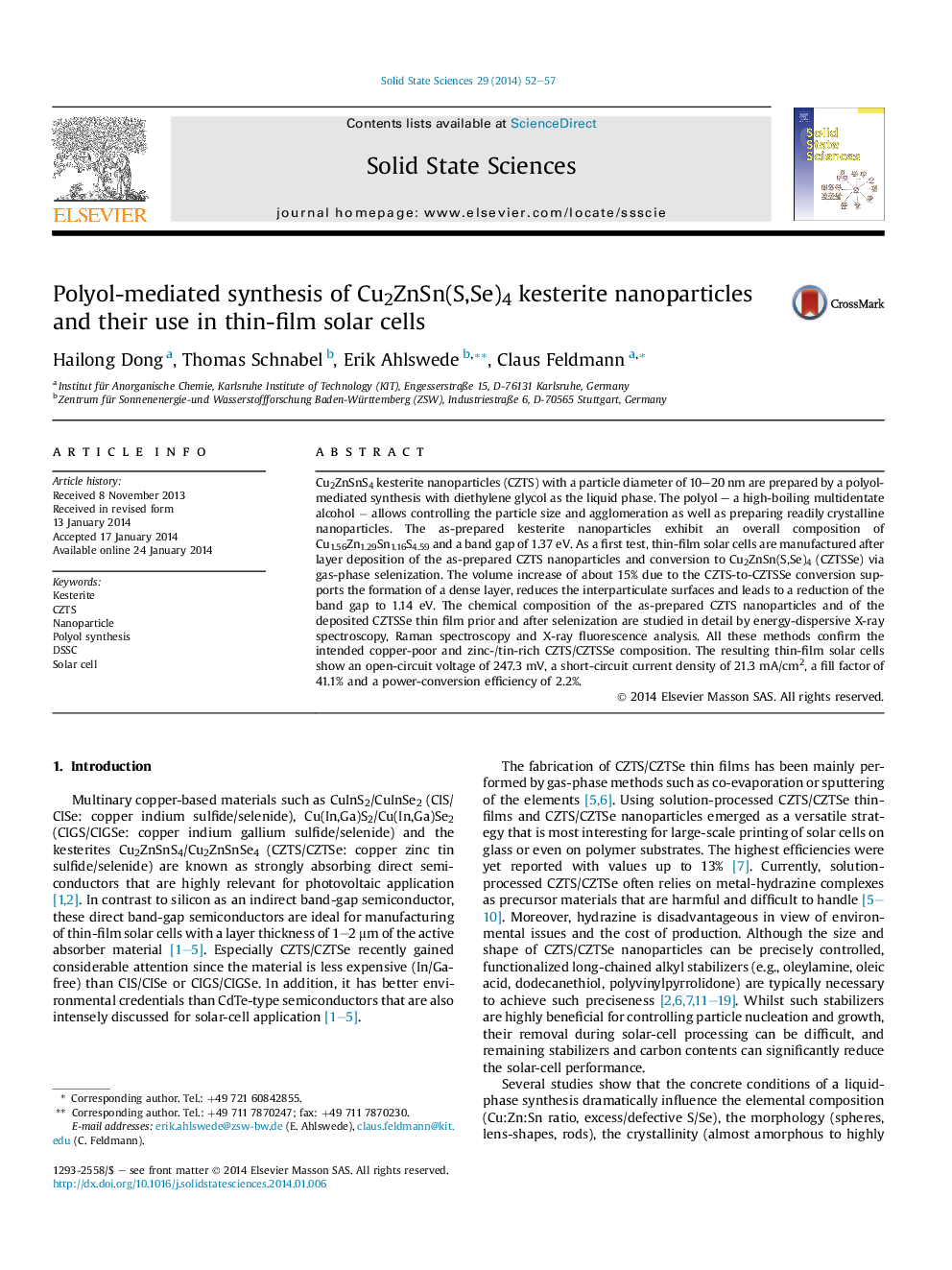| کد مقاله | کد نشریه | سال انتشار | مقاله انگلیسی | نسخه تمام متن |
|---|---|---|---|---|
| 1504556 | 1510993 | 2014 | 6 صفحه PDF | دانلود رایگان |

• Kesterite nanoparticles synthesized via polyol-mediated synthesis.
• Particle size, chemical composition and band gap determined.
• Detailed characterization of chemical composition prior/after layer-deposition and selenization.
• Thin-film CZTSSe solar cell manufactured with 2.2% efficiency.
Cu2ZnSnS4 kesterite nanoparticles (CZTS) with a particle diameter of 10–20 nm are prepared by a polyol-mediated synthesis with diethylene glycol as the liquid phase. The polyol – a high-boiling multidentate alcohol − allows controlling the particle size and agglomeration as well as preparing readily crystalline nanoparticles. The as-prepared kesterite nanoparticles exhibit an overall composition of Cu1.56Zn1.29Sn1.16S4.59 and a band gap of 1.37 eV. As a first test, thin-film solar cells are manufactured after layer deposition of the as-prepared CZTS nanoparticles and conversion to Cu2ZnSn(S,Se)4 (CZTSSe) via gas-phase selenization. The volume increase of about 15% due to the CZTS-to-CZTSSe conversion supports the formation of a dense layer, reduces the interparticulate surfaces and leads to a reduction of the band gap to 1.14 eV. The chemical composition of the as-prepared CZTS nanoparticles and of the deposited CZTSSe thin film prior and after selenization are studied in detail by energy-dispersive X-ray spectroscopy, Raman spectroscopy and X-ray fluorescence analysis. All these methods confirm the intended copper-poor and zinc-/tin-rich CZTS/CZTSSe composition. The resulting thin-film solar cells show an open-circuit voltage of 247.3 mV, a short-circuit current density of 21.3 mA/cm2, a fill factor of 41.1% and a power-conversion efficiency of 2.2%.
Figure optionsDownload as PowerPoint slide
Journal: Solid State Sciences - Volume 29, March 2014, Pages 52–57